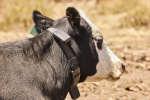This could be their biggest decision since they bought their farms, so the need for the right analysis of financial viability and farming systems is paramount.
The timeframe is short, with expressions of interests (EOIs) hopefully being converted on March 31, 2014 into water user agreements, allowing only about six months to do this critical analysis.
I’ve been working closely on this project, from a financial point of view, and have already done detailed marginal analysis work for some clients. I’ve also been researching, working with the HB Regional Investment Company and forging relationships with farm advisors and water specialists, as some farming operations will require more extensive investigations.
The decision whether to proceed or not rests on the final price of the water (23c/m3 is a current approximation) and the extent of extra infrastructure/development required on each farm. At the time of writing, the final water price has not been determined, and will not be until the successful tenderer has been appointed (about mid-October).
Analysis from the South Island indicates farm values increase proportionately at a far greater rate once infrastructure has been installed, when compared with inflation and general demand for land.
Each farmer’s circumstances are different: some already have large investment in irrigators and bores, some have relatively low debt servicing, while others want to change their whole farming operation around the ability to use a guaranteed water supply. This is why taking a team approach and involving a range of key specialists is vital to the decision making process. It also demonstrates the need to bring younger family members to the fore to help in the analysis and longer term decisions.
Many important dates and timeframes must be considered. First, ensure you compile production data to use in an analysis – say, the last three years. Then think about options to diversify or change the farming operation and tie this with your long term strategic direction.
• Denis Hames is a principal and RWSS specialist for Crowe Horwath at the firm’s Waipukurau office, Central Hawke’s Bay. Email This email address is being protected from spambots. You need JavaScript enabled to view it.
















